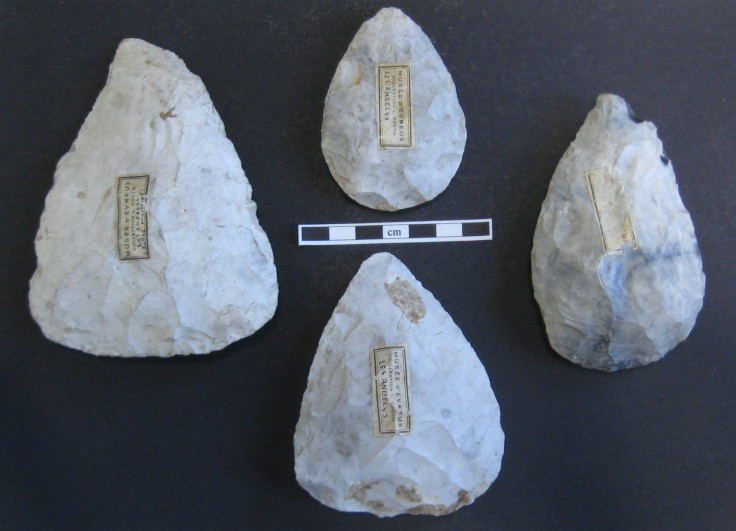Neanderthals, More Culturally Complex Than Previously Believed, Had Distinct Handaxe Traditions

Researchers are discovering Neanderthal societies were much more culturally complex, even having distinct regional-based handaxe traditions. For Neanderthals living in a region now covering parts of France and Britain developed a symmetrical handaxe design while other Neanderthals living in what is now Germany and further east developed asymmetrical knives.
Karen Ruebens, from the Centre for the Archaeology of Human Origins at the University of Southampton, discovered the two independent Neanderthal handaxe traditions that had a clear geographical boundary. Ruebens and a team of researchers examined 1,300 different handaxe and tool designs from different Neanderthal sites in Belgium, the United Kingdom, France, the Netherlands and Germany. The researchers were able to clearly separate the designs into three categories, one tradition belonging to Neanderthals in a region that now covers parts of France and the UK, another tradition in Germany and a transition zone that indicates interaction between the different Neanderthal societies.
Ruebens says the area that marked a transition between the two designs, located in an area that covers parts of Belgium and Northern France, could have also served as a meeting place between Neanderthals and modern humans. “This area can be seen as a melting pot of ideas where mobile groups of Neanderthals, both from the eastern and western tradition, would pass by – influencing each other’s designs and leaving behind a more varied record of bifacial tools,” said Ruebens in a statement.
During the same time period, western Neanderthals were creating symmetrical, heart-shaped handaxes while eastern Neanderthals created asymmetrical tools. The designs were passed down from generation to generation, indicating a complex social aspect to the Neanderthal societies. Ruebens said “This indicates a strong mechanism of social learning within these two groups and says something about the stability and connectivity of the Neanderthal populations.” The creation of the tools went beyond what was available in the region and indicates a sort of Neanderthal tradition with handaxe design.
Previous research indicated Neanderthals may have been more advanced than previously believed with the invention of bone tools widely used in the modern age. The new research, published in the Journal of Human Evolution, indicates a cultural complexity within Neanderthal societies.
© Copyright IBTimes 2024. All rights reserved.






















